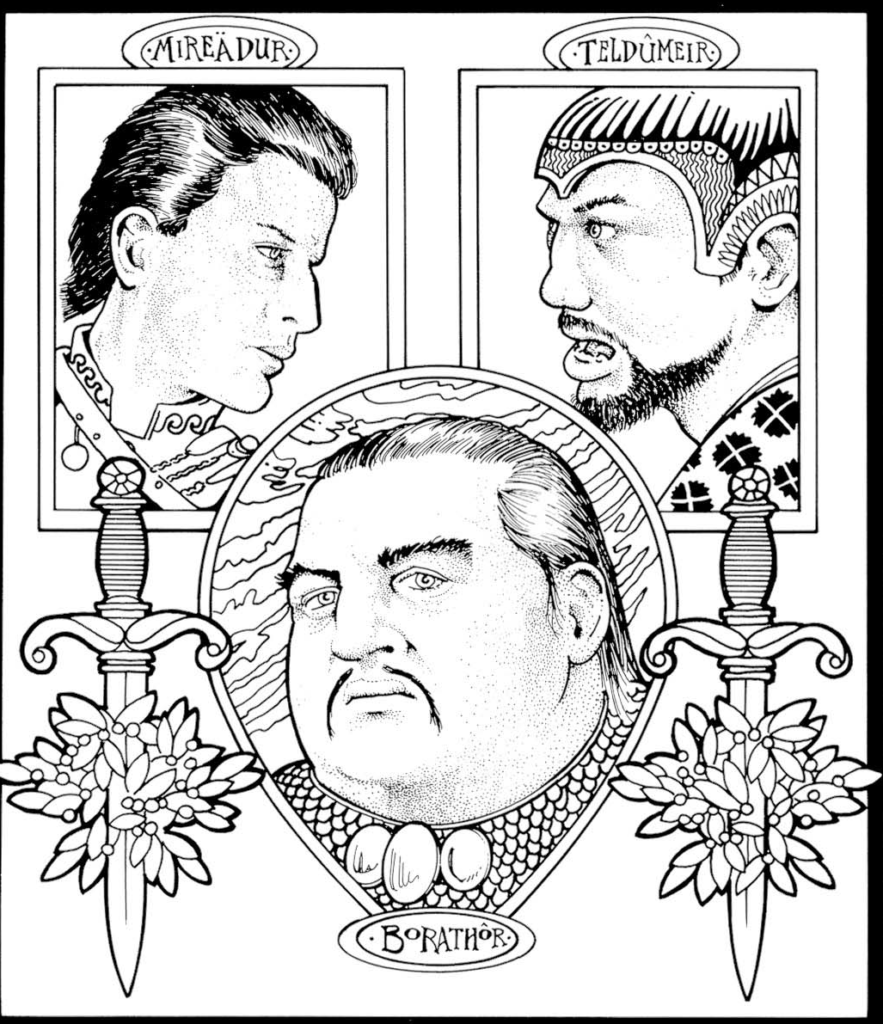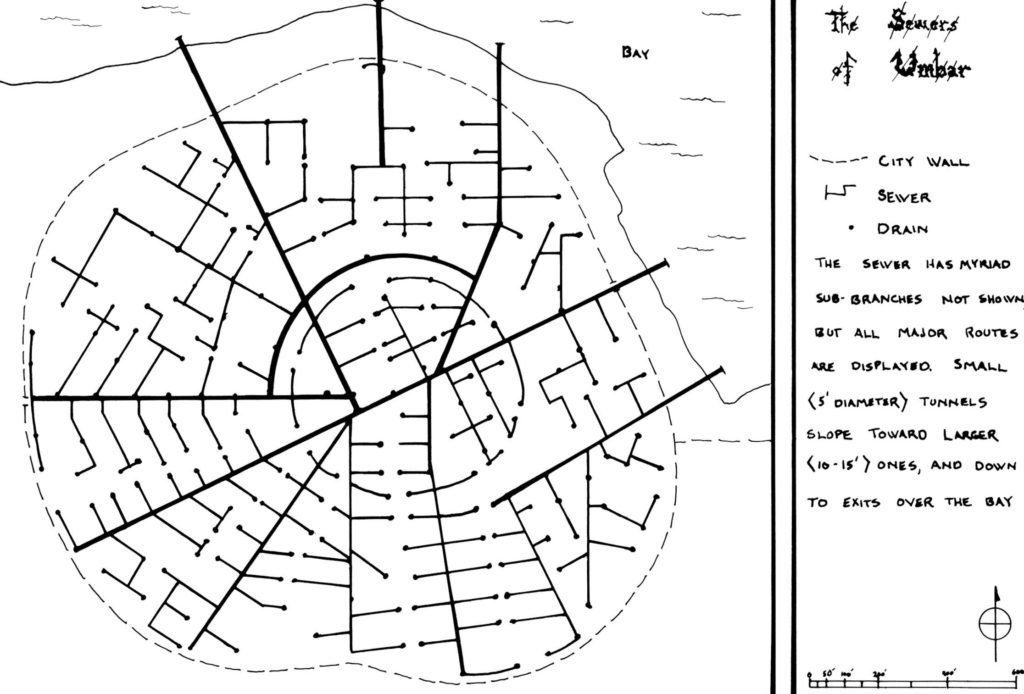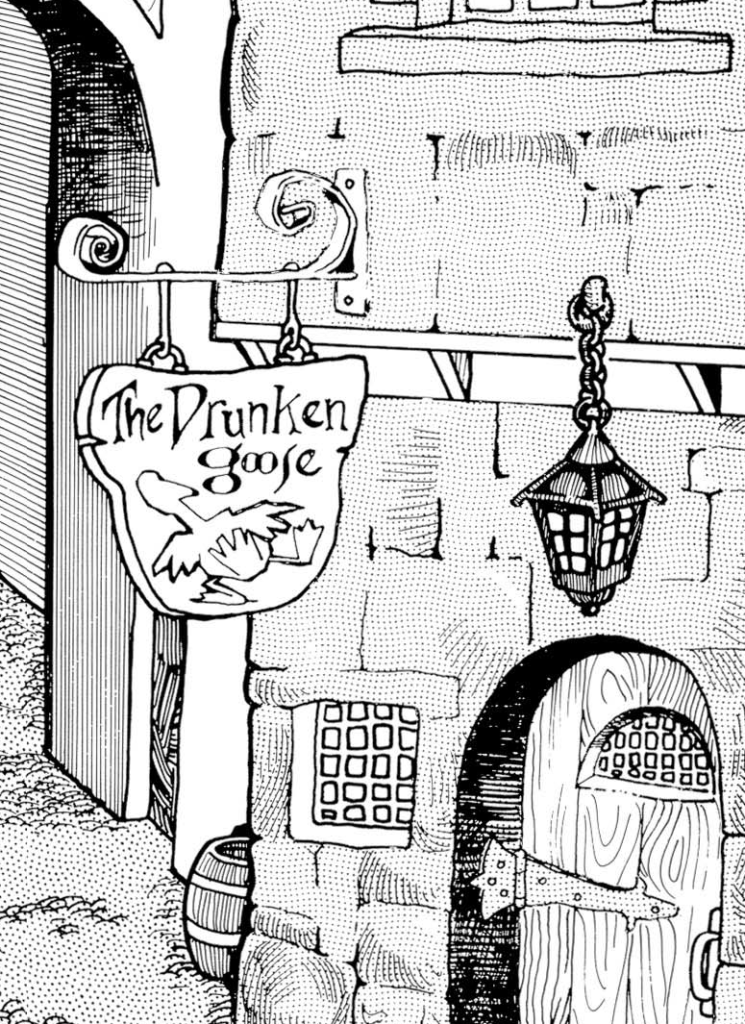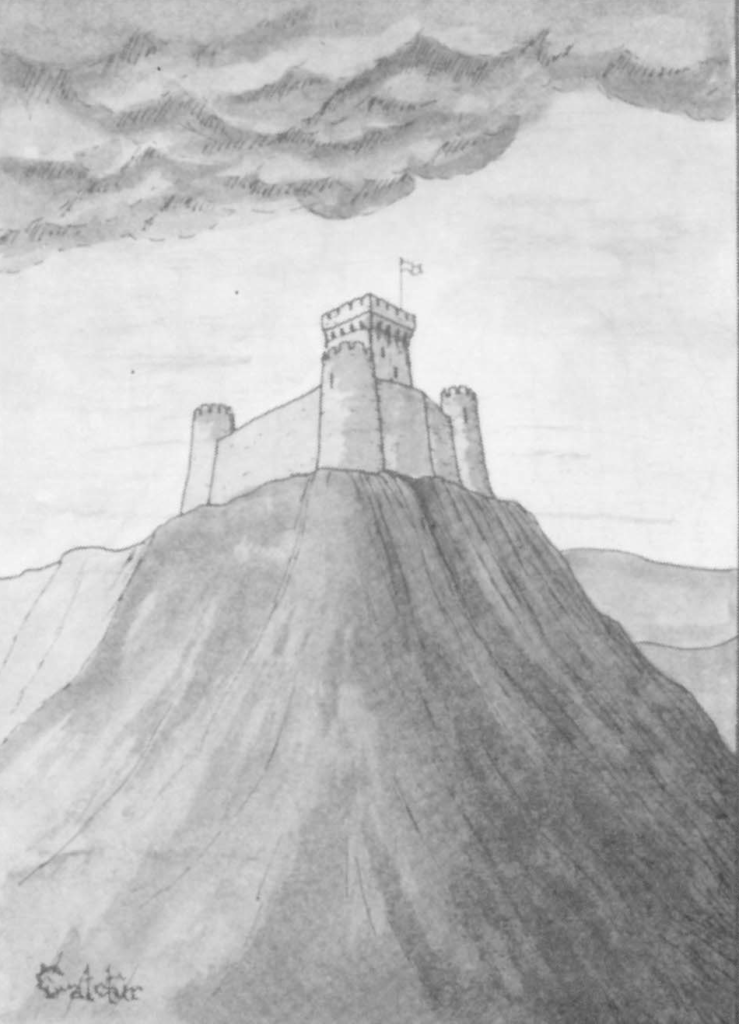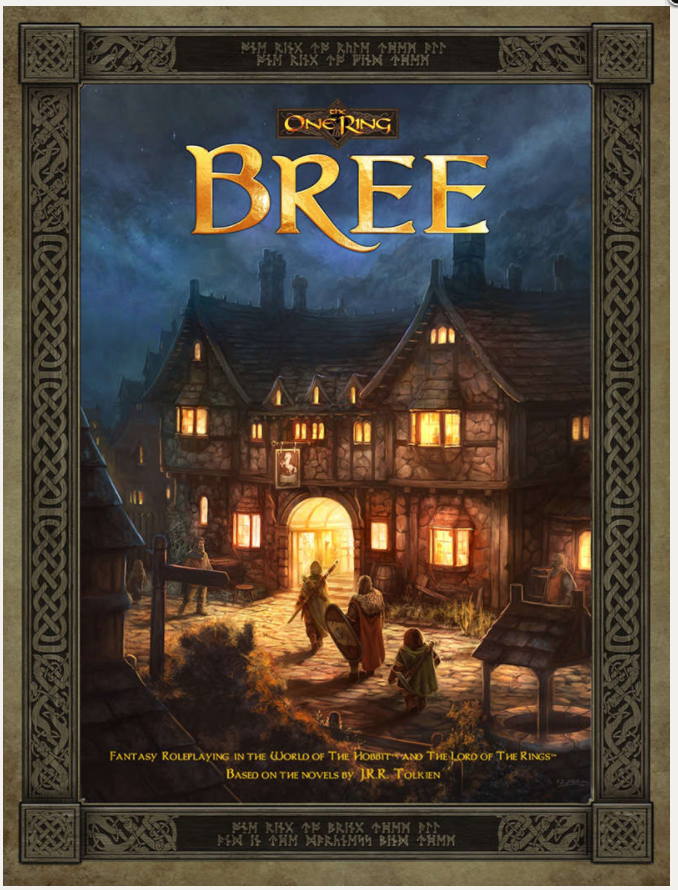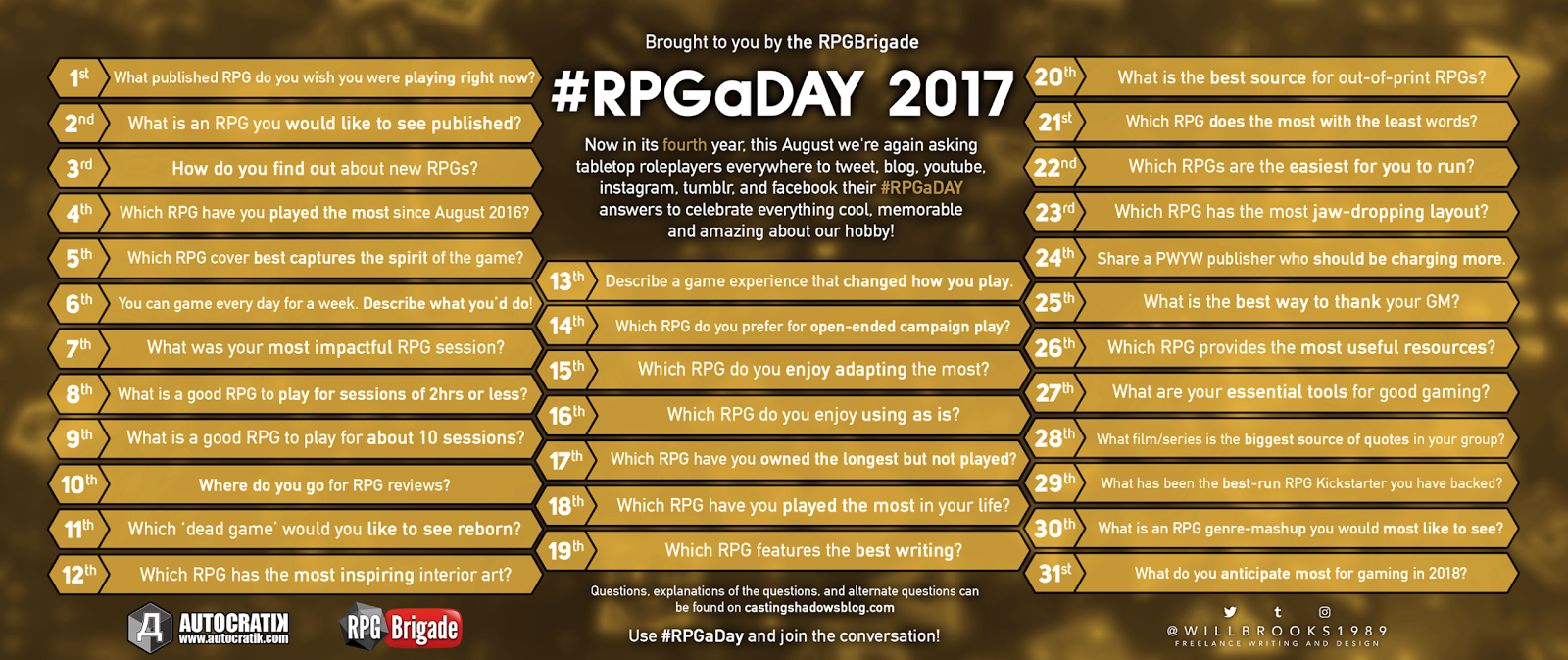Before I get into my thoughts on the Bard, it’s probably important to look into the past. The rpg Bard profession was introduced in the 1st edition AD&D Players Handbook, wayyyy in the back on page 117 as optional material. What does Gary say regarding the bard:
As this character class subsumes the functions of two other classes, fighters and thieves, and tops them off with magical abilities, it is often not allowed by Dungeon Masters. Even though this presentation is greatly modified from the original bard character class, it is offered as supplemental to the system, and your DM will be the final arbiter as to the inclusion of bards in your campaign.
AD&D not only required the Bard to have fairly incredible stat scores to qualify, but they needed to attain at least 5th lvl fighter, than switch to thief, then attain at least 5th level and then start tutelage as a Druid!!! That’s a pretty steep climb for any character class. What was it about the Bard that required multi-classing and high attributes?
That wasn’t the final word on the Bard. New material for the Bard was presented in Dragon Magazine #56 of December 1981. Both the original Players Handbook and Dragon Magazine article are worth a read just to understand the origins and ideas around the Bard class. The Dragon article, in particular really delves into the western cultural history of bards.
Obviously, the RM Bard profession was included to match up with the AD&D rules, but where does a Bard really fit into a gaming group in Rolemaster? Like any semi-spell user, they are weak by nature of the balance between spell acquisition and martial skills. Song spells require them to perform at the cost of all other actions, and their lore and knowledge skills are only important if the game requires it–the RM “Attunement” skill takes over a lot of magical item analysis.
Several original RM professions seemed more geared towards being NPC’s than PC’s: Healers, Astrologers, Alchemists, Seers certainly, and Bards might be just a toss-up? So what might a player character Bard bring to the table?
- A “Jack of All Trades” role for the group.
- Knowledge/Lore.
- Language Skills.
- Social Skills.
- AoE Spells. (with major limitations)
That’s a great list if you are playing AD&D that has strict profession requirements and limitations, but how does that work with Rolemaster?
- Jack of All Trades. Rolemaster already allows any profession to access all available skills. You can be a “Jack of All Trades” with virtually any profession.
- Knowledge/Lore. Meta-gaming aside, this will really be dependent on the GM and the game. Rolemaster has the Attunement skill and there are various spells to assess items so a specialist Bard might not be critical.
- Language Skills. Language should be important but can often be a plot obstruction. However there are Channeling and Mentalism spells that allow for communication.
- Social Skills. For many games, social interactions are just roleplayed. I think social skills can add depth to a game, but does a GM want to develop greetings, insults, eating graces and social norms for every culture, civilization or group the game meets? In social situations–which could be virtually every encounter that isn’t met with immediate violence, the Bard could be a lifesaver. Literally.
- AoE spells. The one standard thread of Bard’s abilities is the power of music and song. This allows a Bard to cast “buffs” on the group and possibly neutralize adverse affects like “Fear”, “Loss of Morale”, “Sonic attacks” etc.
So, looking over this list, there are 2 items that stand out as Bard specific: Social skills and AoE spells. Do these two abilities justify the Bard profession? Does it only come down to a handful of constructed spell lists to make a Bard? If so, do normal skills and skill costs matter if virtually all of the Bard’s abilities are derived from their Base lists?
Putting aside the D&D versions of the Bard, what works of fiction depict Bards? My earliest idea of a Bard came from the Black Cauldron series: Fflewddur Fflam. Later, there were traces of “bardic” DNA in Tolkien: poems, epic stories, songs and even slight ditties were sprinkled throughout the story. Obviously, there was “Bard” in the Hobbit: a descendant from the men of might, who slew Smaug and became the lord of Dale. Of course, his name evoked an image of “Bard” but not necessarily “a Bard” profession. In more recent works, we have Kvothe, from the Kingkiller trilogy. Kvothe is a man of many talents, a “Jack of All Trades” who has spellbound people with the power of his music. But he is also a “Wind Mage”, “Alchemist” and “Martial Artist”. Is Kvothe a “Bard” drawing from fantasy inspirations, or simply drawing from the “Philosopher King” mythos? It’s apparent that in myth and literature, Bards are truly unique individuals; AD&D reinforces this principle with the stat requirements and lengthy development process. But every PC cannot be king or group leader by mere fact of their profession. How do Bards fit into a fantasy RPG group?
Whether you base it on Welsh, English, Western or Eastern lore, Bards can be defined by their titles: Minstrel, Troubadour, Jester, Actor, Diplomat, Tinkerer, Jongleur, Poet, Musician or even Balladeer. Some seem noble, others tricksters. Some are repositories of truth while others spread fantastical tales for fame or fortune. These wide ranging and varied definitions are no different than any other RM profession. But the single factor that defines a Bard over another class is the use of music and song. Otherwise, the tertiary skills of Bards are purely cultural and are driven by the fantasy world it occupies.
So where might that fit into Rolemaster? I’m going to revert to an earlier blog format I’ve used previously: ROLEMASTER PROFESSION REVIEW: TAKING ANOTHER LOOK AT THE SHAMAN. In this blog, we’ll be looking at a few variations of Bards that could work in Shadow World.
Bard Loremaster.

Bard Type: Diplomat, Mentor, Tutor, Advisor, Historian
Prominent Skills/Training: Lore, Social Skills, Language, Etiquette, History, Diplomacy, Debate, Philosophy, Influence, Perception, Memory.
Spell Lists: Base Loremaster Lists “Living Lore”, “Lost Lore”, “Word Lore”, “Lore Mastery”; Base Bard “Controlling Songs”; Essence Lists “Spirit Mastery”, “Detecting Ways”, “Essence Perception”,
Tasks/Jobs/Roles: Bard Loremasters serve as advisors, observors, tutors and diplomats to governments, leaders, and rulers.
While a Loremaster is not an official RM Profession, they hold a quasi professional status in Terry’s world. They have Base Lists, organization etc but under RM rules still have to be proscribed a traditional RM class rather. (It would be easier just to create a quick skill cost list and designate the Loremaster as a SW specific profession!) When looking at the roles and skills of Loremasters: historians, mentors, advisors and teachers, the Bard class seems well suited for this job! Loremasters will often appear to be powerful NPC’s that can guide the players, but Loremasters have to be low level to start! Making your Bard PC a journeymen Loremaster is a great solution for the class. They can provide campaign guidance to the group, become a vector for new adventure paths, access information and help when needed and not necessary imbalance the game. A low level initiate in the Loremaster organization and being in an adventure group are not exclusive!
Bard Cleric of Kieron.

Bard Type: Leader, Fellowship, Goodwill
Prominent Skills/Training: Song, Dance, Instruments, Oration, Acting, Social, Mediation,
Spell Lists: Base Bard Lists “Inspiring Songs”, “Sound Control”, “Entertaining Ways”, “Controlling Songs”, Kieron Base List.
Tasks/Jobs/Roles: Cleric Bards serve as Masters of Ceremonies, lead Holiday and Festival events, entertain, spread cheer and goodwill and impartial but fair judges.
If you drop the mental models around classes and realms it’s easy to see that a Bard could easily be a “Cleric” of Kieron. Sure, you might need to change the spell Realm to Channeling, but so what! Kieron is the God of Festivals, and he would definitely want a Bard type to be his emissary on Kulthea. This really doesn’t change the nature of the Bard and probably makes more sense from a learning and institutional process.
Legacy Bard.

Bard Type: Secretive, Warrior, Purposeful, Hidden Knowledge
Prominent Skills: Combat, Stalk & Hide, Perception, Lore, Languages, Survival.
Spell Lists: Bard Base “Controlling Songs”, Mentalist “Mind Merge” and “Mind Speech”, Druid Base “Natures Lore”
Tasks/Jobs/Roles: Keep hidden or lost knowledge alive. Search/find/protect bloodlines of past empires. Recover knowledge and artifacts of past eras.
There are 2 major empires that might have a “legacy organization”–a small group of survivors that retain the knowledge of a past era. If we focus only on Jaiman and Emer that would be the combined crown Kingdoms of Jaiman in the early part of the third Era and the Emerian Empire of the 2nd Era. Imagine a hidden group of loosely organized Bards. Who better to retain and disseminate the knowledge of these past empires and work to return the world to it’s old glory. Emerian Bards might be secretly fighting the new Orders that have been subverted while the Jaimani Bards work to re-unite the splintered realms.
Travelling Bard.

Bard Type: Jack of All Trades, Tinkerer, Minstrel, Troubador, Adventurer
Prominent Skills: Perception, Disarm Traps, Survival, Trickery, Animal Handling, Ambush, Music, Song, Social, Influence, Crafts, Gadgetry, Item Lore, Thieving Skills
Spell Lists: Bard Base, Mystic Base “Confusing Ways”, various Open and Closed up to 5th lvl. Minor Illusions.
Like a “Hedge Wizard” a Travelling Bard is more akin to a Tinkerer, an informally trained “Jack of All Trades”. These Bards wander and survive on their wits and skills. They have spells, but they are generally lower level and represent a broad hodge-podge of spell powers. These Bards still play instruments and perhaps sing, but not with a great deal of skill. Travelling Bards are great random NPC’s or can be a fun addition to the group by straddling the role of Thief, Negotiator and Comic Relief!
So that’s my thoughts on 4 types of Bards that can be great in Shadow World or Bard archetypes to be used in any setting. Really, there is a Bard for every occasion!!!


